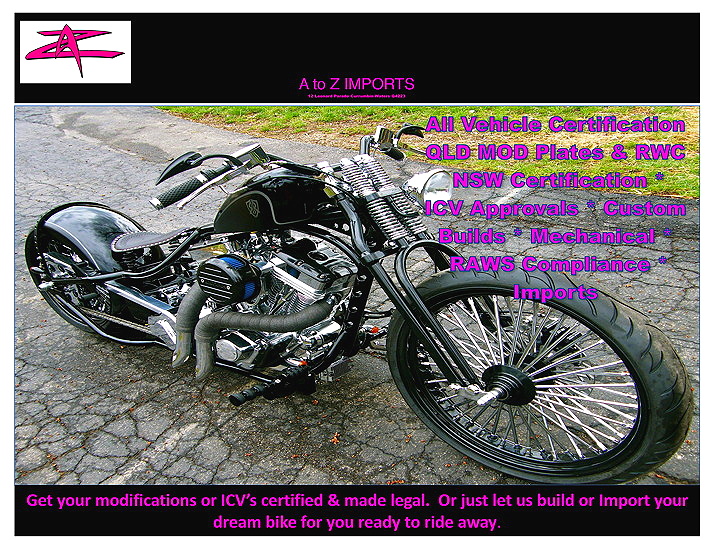
The Celtic Axe Harley-Davidson Softail
RICHARD IS an Irish builder who moved to Australia to marry an Australian girl: “I’m in the construction industry and we build everything from schools, hospitals and shopping centres. My wife’s from Brisbane here, from the northside. I shifted her to the southside; she’s never forgiven me.”
Richard also plays the bagpipes.
“My father, my grandfather, they all played the pipes. My wife Jack thinks they’re a bloody nightmare because she never sees me—I’m either on the bike or playing the bagpipes. I play in a band that’s based in Ipswich. Last year we spent three weeks in Laurent in the West Coast of France and I’m always doing Celtic festivals around the country. We were supposed to have an easy year but then we got an offer to go over to Moscow to play in Red Square for the first Tattoo Red Square. So we are heading off now on Friday of this week. So next week we’re going to be piping with the Ruskies.”
The Axe started as a 1990 Harley-Davidson Softail FXSTC.
“Over the years it’s had a few different changes—drag pipes, T-bar handlebars, etc—then about a year ago I read an advert in Ozbike for Anderson’s Custom Cycles and decided to visit Chris Anderson for a set of big heavy handlebars. You can see what it’s developed into.”


Richard gave Chris the idea of the Axe.
“I’ve always been interested in Celtic art and weaponry. The axe was the only weapon that looked offensive and actually worked with the rear guard. I tried all the different radius, outward, inward and multiples, but this was the only one that actually worked in relationship to the wheel. I wanted Chris to make sure that he kept the guard high enough that at no stage we actually lost the full diameter of the rim.”
The axe on the rear guard was actually built in steel; it’s not just painted on.
“Everything is solid steel. What Chris did was build the axe using wire rolled into the correct shape, then he welded sheet metal over the top to get the appearance that it actually is a real axe.”


Then Stuart from Ultimate Air Brush painted the whole thing.
“I told Stuart I wanted the axe to look like it had been used, battered and worn, to look like old armour. He was only given one instruction—no flames and no skulls ’cause I thought that had been well and truly done by everyone. He still managed to get two skulls on—one on the front guard and one on the rear guard.”
During the build, Richard’s son, Ben, was killed in a car accident in Brisbane.
“I thought I would make the Axe a tribute to him; that’s the reason I got the shield on the side of the bike. I gave Stuart the shield and told him what I wanted. The result was very subtle without going overboard.”
The Axe looks a lot lower than it is.
“The front forks are two-inches-over but we lowered the rear two inches. To give the illusion that we actually dropped it a lot further, the rear guard was welded onto the swingarm.”
The gear-change linkage matches the bike perfectly.
“It’s a proper axe Chris had to modify to work.”
Jack, Richard’s wife, has always been very supportive.
“The number plate was something that my wife arranged; she came up with the concept. At one stage I was actually contemplating building her a trike ’cause there’s no way she could hold up a bike but she had the sense to tell me to spend the money on my bike, so I did.”
The Axe has style; it’s different and attracts attention wherever it goes.
“I’ve had it in a few shows and it’s taken a couple of awards. I enjoy people seeing it and appreciating it; that’s the way it should be.


Make sure you check out the photos of Shelly with the Celtic Axe.
pics by Walter Wall
Discover more from Ozbike Digital Magazine
Subscribe to get the latest posts sent to your email.

